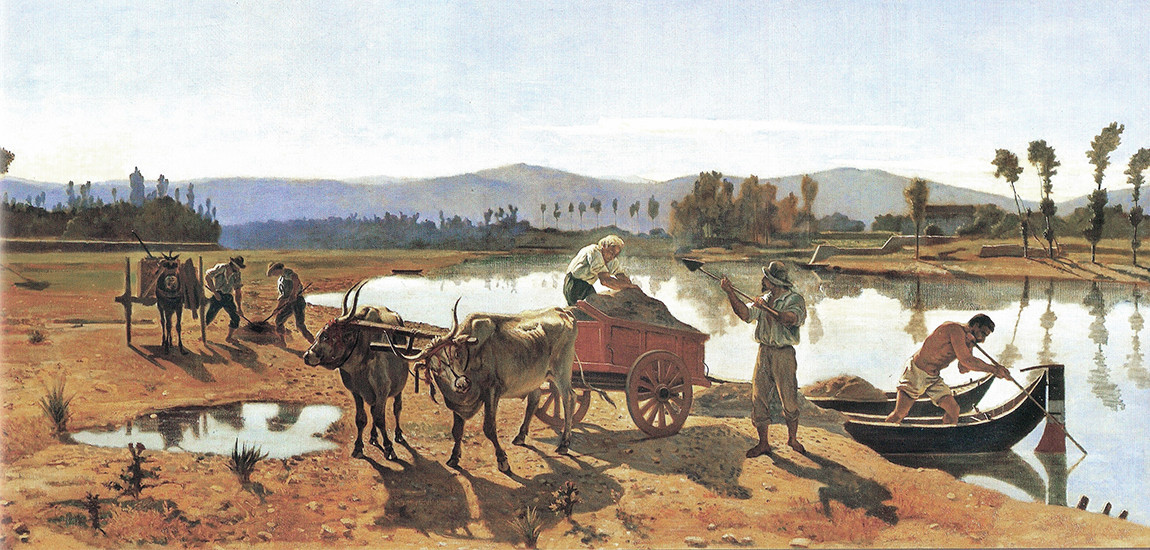
Florentine Renaioli
The Arno river has always been a faithful friend to the Florentines,
allowing the proliferation of numerous activities along its banks, exploiting
every resource it made available. In particular, a city with an intense
building activity like Florence, needed a great quantity of building material,
and it is precisely to this necessity that the Renaioli provided for. In the
19th century, they were those who digged sand from the bottom of the river,
sailing on small boats.
The boats of the renaioli had to be kept always in good condition, because they
could also be used to transport the citizens in exceptional cases. Every
evening they were pulled ashore and kept safe at the docks to avoid their
clandestine use during the night.
The sand collected by the renaioli was divided by degree of thinness and piled
up and left to dry on the shore and then transported to construction sites with
the "barroccio", a special cart, to be used to build Florentine
houses and palazzi.
When the Arno was dry, the activity could be carried out even without a
boat, but whether practiced from the shore or on the water, that of the sand
digger remained a very hard and tiring work. The renaioli were often the
subject of chatter among tourists visiting the city, scandalized by the sight
of these men who worked on the river all sweaty and bare-chested.
So much effort also required a great deal for energy, and consuming a large
meal was absolutely necessary. That's where the wives of the renaioli came into
play: at lunchtime they began to cook large quantities of pasta and
"florentine trippa" on the riverbanks and once the meal was ready
they shouted loudly to call in their husbands: "Bucaioli, c'è le
paste!" (roughly translated as "Hole diggers, pasta is ready!"),
an expression now entered in the Florentine slang. The renaioli were in fact
commonly called "bucaioli" because of the numerous holes they left at
the bottom of the Arno with their continuous digging.
The activity of the renaioli, often represented in the paintings of Macchiaioli artists, continued until the World War II, when it was replaced by modern methods of sand extraction.
However, since 1995, the Association "I Renaioli" was established to
preserve the historic boats, that today is possible to take on a tour of the
Arno river and see Florence from a new perspective.
The tour includes the privileged passage under Ponte Vecchio, certainly a
unique experience one should try once in a lifetime!



